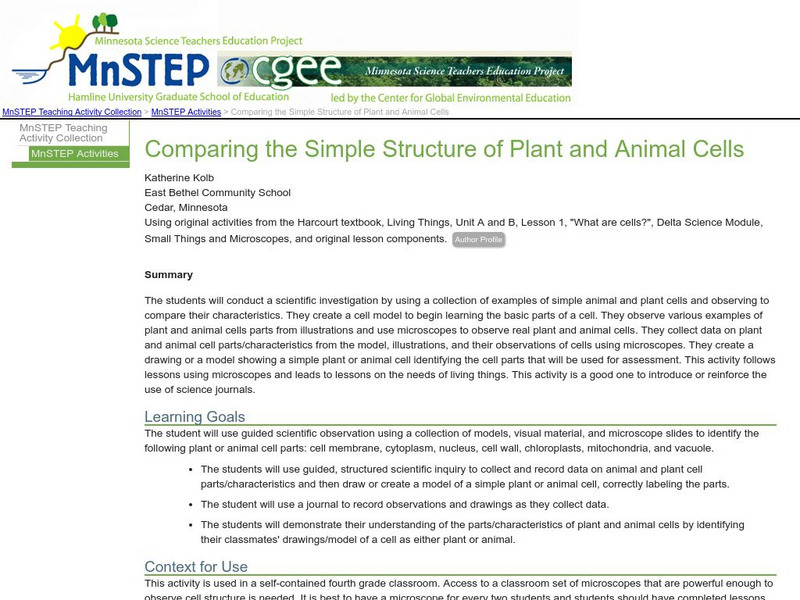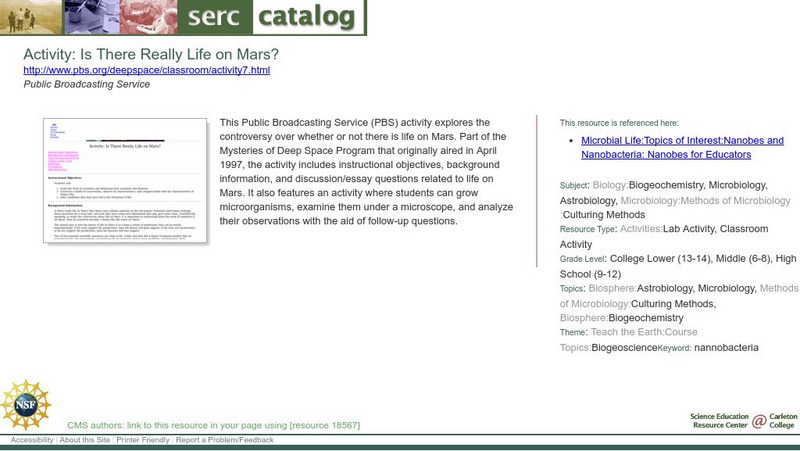Science Education Resource Center at Carleton College
Serc: Comparing the Simple Structure of Plant and Animal Cells
Learners use guided scientific observation using a collection of models, visual material, and microscope slides to identify cell organelles. Then they demonstrate their understanding of the parts/characteristics of cells by identifying...
Science Struck
Science Struck: The Compound Microscope Parts and Its Functions
Goes through the different structural and optical parts of a compound microscope and how a compound microscope functions.
Other
Southern Microscope Service's Home Page
A series of pages explaining how microscopes work, the parts of a microscopes, the techniques of using a microscope, and other useful information.
My Science Site
Bj's Science: Microscope Diagram [Pdf]
Site is simply a picture of a microscope that has numbers that correspond with each part of it. No answers are provided. A good reproducible if you are looking for a detailed view of the different microscope parts.
Other
National Institute for Basic Biology: The Plant Organelles World
This web resource provides basic information about structure and function of plant organelles through a large interactive cell drawing, as well as many opportunities to explore further. Links lead the learner to several short movies of...
Other
Iris Pigmentation Research Info
The focus of this site is the anatomy of the eye. The site include diagrams and slides showing details at the light microscope and electron microscope level.
Science Education Resource Center at Carleton College
Serc: Activity: Is There Really Life on Mars?
This Public Broadcasting Service (PBS) activity explores the controversy over whether or not there is life on Mars. Part of the Mysteries of Deep Space Program that originally aired in April 1997, the activity includes instructional...
TeachEngineering
Teach Engineering: Imaging Dna Structure
Students are introduced to the latest imaging methods used to visualize molecular structures and the method of electrophoresis that is used to identify and compare genetic code (DNA). Students should already have basic knowledge of...





